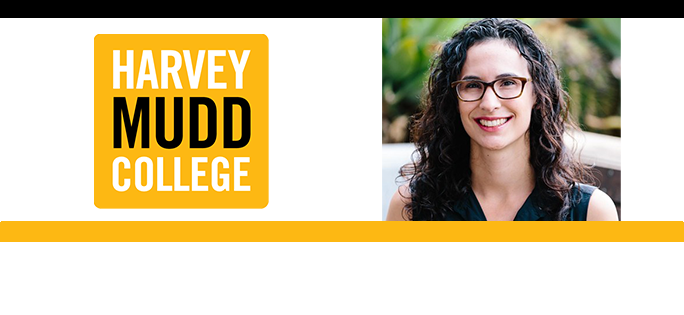 On Harvey Mudd College Week: What can fish teach us when they’re out of the water?
On Harvey Mudd College Week: What can fish teach us when they’re out of the water?
Leah Mendelson, associate professor of engineering, looks into this.
Dr. Leah Mendelson holds a B.S. from Olin College (2011) and a M.S. (2013) and Ph.D. (2017) from MIT, all in mechanical engineering. At Harvey Mudd College, Dr. Mendelson teaches classes and mentors students in engineering design and solid and fluid mechanics. She also directs the Flow Imaging Lab at Mudd (FILM). Her research interests include biological fluid mechanics, bio-inspired mechanism design, and techniques for fluid flow measurement in both research and educational settings.
Fish Out of Water
We know well what it means to “Swim like a fish.” Fish exemplify how to move efficiently and elegantly through the water. It’s why we go to the aquarium. We might think about fish when we’re swimming ourselves. And engineers have taken notice too.
Fish have inspired engineers to design underwater vehicles and robots that are more agile and efficient than your typical boat or robot. These designs let us explore and study the marine environment in new ways.
But fish don’t always swim in limitless open water. My work instead looks at when a fish leaves the water. Fish jump to avoid predators, migrate to a new habitat, or capture prey living outside the water, like insects. The same variety of movements that you’ll see watching fish swimming at the aquarium happens with their jumping as well.
Jumping out of the water can be a lot harder than just swimming through it, especially when caught half in and half out of the water. Pushing against air doesn’t propel a fish the way water does. Splashing and making waves at the surface costs energy.
Using a mechanical model of the fish’s undulating motion, like a fin for an underwater robot, we’ve found that the size of the surface disturbance has a big influence on how much thrust we achieve and how efficiently our jumping fish would move. This is a new way to think about how the fish moves as it leaves the water. Controlling the surface disturbance is also an important design consideration for a semiaquatic robot, especially if we want to avoid disrupting the environment our robot is moving in.
For my work, being a fish out of water represents a big opportunity.
Read More:
[Harvey Mudd College] – NSF Supports Mudders in the Splash Zone of Bioinspired Fluid Mechanics


Leave a Reply